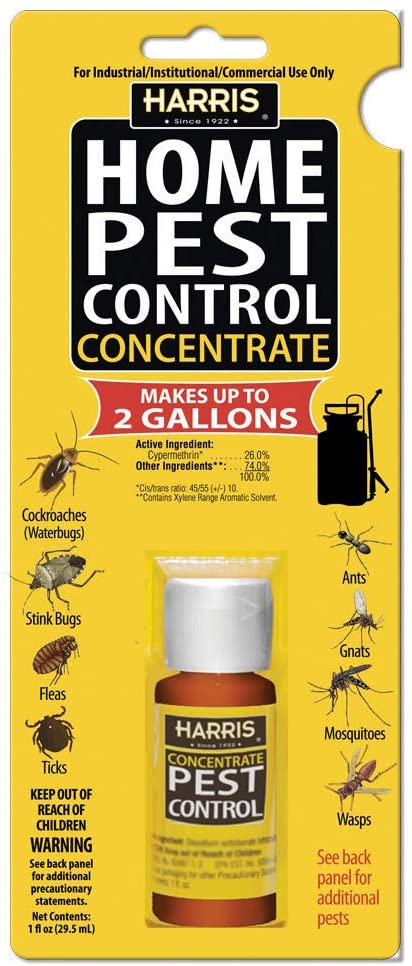Top Quality A1 Pest Control Services Charlotte - Secure Your Home
Top Quality A1 Pest Control Services Charlotte - Secure Your Home
Blog Article
Bed Insect Therapy Break Down: Comparing Chemical Vs. Non-Chemical Solutions
In the realm of insect control, specifically when dealing with the persistent concern of bed pests, the choice between chemical and non-chemical treatment options can be a crucial one. Both approaches offer unique advantages and disadvantages, affecting factors such as efficiency, safety and security considerations, and total price. By taking a look at the nuanced information of each approach, a clearer understanding of which course to pursue in dealing with a bed pest infestation can be achieved.
Efficiency of Chemical Treatments
Chemical treatments for bed bug problems have actually been extensively identified for their potent and rapid effectiveness in getting rid of these parasites. When thinking about the efficiency of chemical treatments, it is vital to recognize that they can give a extensive and quick option to a bed pest issue. Specialist pest control specialists frequently depend on insecticides to target bed pests at numerous stages of their life process, including grownups, eggs, and nymphs. These chemicals commonly function by disrupting the bed bugs' anxious system, causing paralysis and eventual death.
Additionally, chemical treatments have the advantage of offering residual effects, indicating that they can remain to remove bed bugs even after the initial application. This residual action is particularly beneficial in combating any kind of potential re-infestations. Furthermore, the rapid activity of chemical treatments can bring alleviation to individuals dealing with severe bed insect problems, enabling them to reclaim control of their home rapidly.
Safety And Security Issues With Chemical Solutions
One essential aspect that needs cautious consideration when using chemical solutions for bed bug therapy is ensuring the security of owners and the environment. Direct exposure to specific chemicals used in bed insect treatments can lead to respiratory system concerns, skin inflammation, or other unfavorable reactions, specifically in people with pre-existing problems or sensitivities.
In addition, the ecological effect of chemical remedies is an additional significant consideration. Some pesticides made use of in bed pest therapies may be unsafe to valuable bugs, wild animals, and ecological communities if they leach into the dirt or water systems. It is necessary to utilize chemical therapies carefully, complying with security guidelines, and considering less harmful options to reduce these threats and make certain the efficient and risk-free management of bed insect invasions.
Advantages of Non-Chemical Techniques
Thinking about the potential security concerns and ecological effect associated with chemical remedies for bed insect treatment, exploring non-chemical approaches offers an encouraging choice with a number of distinct advantages. Non-chemical therapies are eco friendly, as they do not add to air or water pollution, making them a lasting terminix pest control choice for insect control.
Additionally, non-chemical remedies can be efficient in targeting bed insects, including hard-to-reach areas where chemical treatments may not pass through - A1 bed bug exterminator charlotte. Methods such as warmth treatment, vacuuming, steam cleaning, and bed mattress coverings supply extensive removal without the usage of damaging chemicals.
Limitations of Non-Chemical Treatments

In addition, non-chemical treatments commonly require several applications to accomplish successful elimination. This can be taxing and may not constantly ensure full elimination of all bed pests and their eggs, especially in concealed or hard-to-reach areas.
Moreover, the success of non-chemical therapies greatly relies upon appropriate application and thoroughness, which can be testing for people without specialist know-how. Inadequate application of non-chemical methods may cause incomplete elimination, bring about consistent problems and the demand for added therapies.
Therefore, while non-chemical treatments have their advantages, it is vital to recognize these constraints and consider them when determining the most efficient strategy for managing bed pest infestations.
Cost Contrast: Chemical Vs. Non-Chemical Options
Given the constraints connected with non-chemical therapies, an essential element to examine in the context of bed pest administration is the expense contrast between chemical and non-chemical choices. Chemical treatments commonly include the application of pesticides by experts, which can vary from $250 to $900 per space, depending upon the best site intensity of the invasion and the size of the area to be treated. In comparison, non-chemical therapies like warmth therapy or vapor can be more pricey, with costs ranging from $1,000 to $6,000 for an entire home. While the initial expense of chemical therapies may appear reduced, numerous treatments may be called for to totally get rid of the infestation, possibly boosting the overall cost. On the various other hand, non-chemical alternatives might give a more green and lasting remedy, although they can be cost-prohibitive for some people. Ultimately, when considering the price of bed bug therapy options, it is vital to evaluate the upfront costs versus the performance and long-lasting sustainability of the picked method.
Verdict

Thinking about the prospective safety worries and ecological impact connected with chemical remedies for bed bug treatment, discovering non-chemical techniques provides a promising choice with numerous unique benefits.Given the limitations connected with non-chemical therapies, an important element to examine in the context of bed pest administration is the expense comparison in between chemical and non-chemical choices. In contrast, non-chemical treatments like heat therapy or steam can be a lot more costly, with expenses ranging from $1,000 to $6,000 for a whole home. While the preliminary price of chemical therapies might appear reduced, several treatments might be required to completely get rid of the infestation, possibly increasing the general price.In final thought, when comparing chemical and non-chemical bed pest treatment choices, it is essential to consider efficiency, security, benefits, restrictions, and price.
Report this page